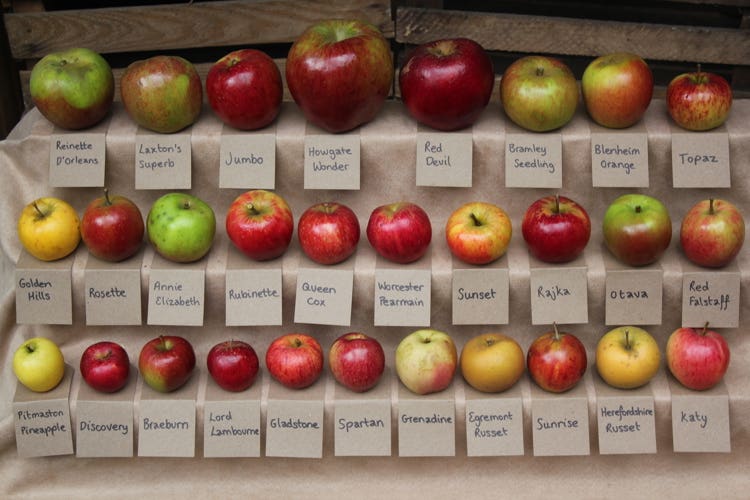Harvard researchers unravel the mystery of touch and why some body parts are so sensitive
Harvard researchers have uncovered a mechanism that may explain why certain body parts are so sensitive.

[Oct 12, 2021: Harvard Medical School]
Some parts of the body—our hands and lips, for example—are more sensitive than others. (CREDIT: Creative Commons)
Some parts of the body—our hands and lips, for example—are more sensitive than others, making them essential tools in our ability to discern the most intricate details of the world around us.
This ability is key to our survival, enabling us to safely navigate our surroundings and quickly understand and respond to new situations. It is perhaps unsurprising that the brain devotes considerable space to these sensitive skin surfaces that are specialized for fine, discriminative touch and continually gather detailed information via the sensory neurons that innervate them.
But how does the connection between sensory neurons and the brain result in such exquisitely sensitive skin?
A new study led by researchers at Harvard Medical School has unveiled a mechanism that may underlie the greater sensitivity of certain skin regions.
The research, conducted in mice and published Oct. 11 in Cell, shows that the overrepresentation of sensitive skin surfaces in the brain develops in early adolescence and can be pinpointed to the brain stem. Moreover, the sensory neurons that populate the more sensitive parts of the skin and relay information to the brain stem form more connections and stronger ones than neurons in less sensitive parts of the body.
“This study provides a mechanistic understanding of why more brain real estate is devoted to surfaces of the skin with high touch acuity,” said senior author David Ginty, the Edward R. and Anne G. Lefler Professor of Neurobiology at Harvard Medical School. “Basically, it's a mechanism that helps explain why one has greater sensory acuity in the parts of the body that require it.”
While the study was done in mice, the overrepresentation of sensitive skin regions in the brain is seen across mammals—suggesting that the mechanism may be generalizable to other species. From an evolutionary perspective, mammals have dramatically varied body forms, which translates into sensitivity in different skin surfaces. For example, humans have highly sensitive hands and lips, while pigs explore the world using highly sensitive snouts. Thus, Ginty thinks this mechanism could provide the developmental flexibility for different species to develop sensitivity in different areas.
Moreover, the findings, while fundamental, could someday help illuminate the touch abnormalities seen in certain neurodevelopmental disorders in humans.
Scientists have long known that certain body parts are overrepresented in the brain—as depicted by the brain’s sensory map, called the somatosensory homunculus, a schematic of human body parts and the corresponding areas in the brain where signals from these body parts are processed. The striking illustration includes cartoonishly oversized hands and lips. Previously, it was thought that the overrepresentation of sensitive skin regions in the brain could be attributed to a higher density of neurons innervating those skin areas. However, earlier work by the Ginty lab revealed that while sensitive skin does contain more neurons, these extra neurons are not sufficient to account for the additional brain space.
“We noticed that there was a rather meager number of neurons that were innervating the sensitive skin compared to what we’d expect,” said co-first author Brendan Lehnert, a research fellow in neurobiology, who led the study with Celine Santiago, also a research fellow in the Ginty lab.
“It just wasn’t adding up,” Ginty added.
To investigate this contradiction, the researchers conducted a series of experiments in mice that involved imaging the brain and neurons as neurons were stimulated in different ways. First, they examined how different skin regions were represented in the brain throughout development. Early in development, the sensitive, hairless skin on a mouse’s paw was represented in proportion to the density of sensory neurons. However, between adolescence and adulthood, this sensitive skin became increasingly overrepresented in the brain, even though the density of neurons remained stable—a shift that was not seen in less sensitive, hairy paw skin.
“This immediately told us that there’s something more going on than just the density of innervation of nerve cells in the skin to account for this overrepresentation in the brain,” Ginty said.
“It was really unexpected to see changes over these postnatal developmental timepoints,” Lehnert added. “This might be just one of many changes over postnatal development that are important for allowing us to represent the tactile world around us and helping us gain the ability to manipulate objects in the world through the sensory motor loop that touch is such a special part of.”
Next, the team determined that the brain stem—the region at the base of the brain that relays information from sensory neurons to more sophisticated, higher-order brain regions—is the location where the enlarged representation of sensitive skin surfaces occurs. This finding led the researchers to a realization: The overrepresentation of sensitive skin must emerge from the connections between sensory neurons and brain stem neurons.
To probe even further, the scientists compared the connections between sensory neurons and brain stem neurons for different types of paw skin. They found that these connections between neurons were stronger and more numerous for sensitive, hairless skin than for less sensitive, hairy skin. Thus, the team concluded, the strength and number of connections between neurons play a key role in driving overrepresentation of sensitive skin in the brain. Finally, even when sensory neurons in sensitive skin weren’t stimulated, mice still developed expanded representation in the brain—suggesting that skin type, rather than stimulation by touch over time, causes these brain changes.
“We think we've uncovered a component of this magnification that accounts for the disproportionate central representation of sensory space.” Ginty said. “This is a new way of thinking about how this magnification comes about.”
Next, the researchers want to investigate how different skin regions tell the neurons that innervate them to take on different properties, such as forming more and stronger connections when they innervate sensitive skin. “What are the signals?” Ginty asked. “That’s a big, big mechanistic question.”
And while Lehnert describes the study as purely curiosity-driven, he noted that there is a prevalent class of neurodevelopmental disorders in humans called developmental coordination disorders that affect the connection between touch receptors and the brain—and thus might benefit from elucidating further the interplay between the two.
“This is one of what I hope will be many studies that explore on a mechanistic level changes in how the body is represented over development,” Lehnert says. “Celine and I both think this might lead, at some point in the future, to a better understanding of certain neurodevelopmental disorders.”
Co-investigators included Erica L. Huey, Alan J. Emanuel, Sophia Renauld, Nusrat Africawala, Ilayda Alkislar, Yang Zheng, Ling Bai, Charalampia Koutsioumpa, Jennifer T. Hong, Alexandra R. Magee,Christopher D. Harvey of Harvard Medical School.
The research was supported by the National Institutes of Health (F32 NS095631-01, F32-NS106807, K99 NS119739, DP1 MH125776, R01 NS089521, and R01 NS97344), a William Randolph Hearst Fellowship, a Goldenson Fellowship, a Harvard Medical School Dean’s Innovation Grant in the Basic and Social Sciences, and the Edward R. and Anne G. Lefler Center for the Study of Neurodegenerative Disorders.
For science and technology stories check out our New Discoveries section at The Brighter Side of News.
Like these kind of feel good stories? Get the Brighter Side of News' newsletter.
Tags: #New_Discoveries, #Harvard, #Touch, #Sensitivity, #Sensory_Perception, #Science, #Research, #The_Brighter_Side_of_News
Joseph Shavit
Head Science News Writer | Communicating Innovation & Discovery
Based in Los Angeles, Joseph Shavit is an accomplished science journalist, head science news writer and co-founder at The Brighter Side of News, where he translates cutting-edge discoveries into compelling stories for a broad audience. With a strong background spanning science, business, product management, media leadership, and entrepreneurship, Joseph brings a unique perspective to science communication. His expertise allows him to uncover the intersection of technological advancements and market potential, shedding light on how groundbreaking research evolves into transformative products and industries.



